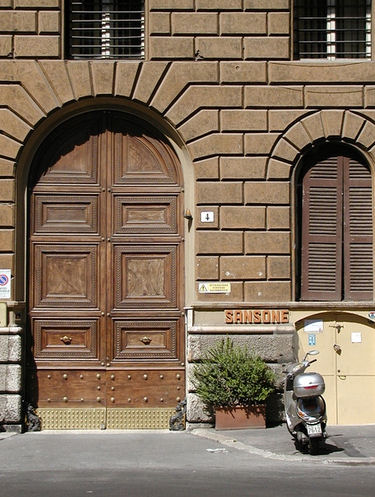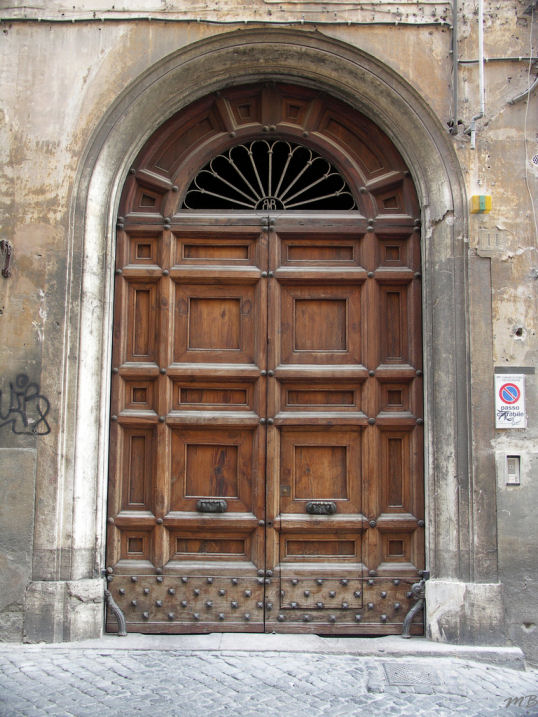Scott Foley of JC Ryan EBCO sent me this photo he took in Rome and wondered what the decorative metal components in the corners are. Anybody know? What’s their purpose and what are they called?
Here’s another version, from Sam Stearman:
And one with a bonus wicket door from Melanie B:
You need to login or register to bookmark/favorite this content.








Don’t know what they are called but I saw a lot of them in Paris. My guess is that the doors CAN swing both ways and these prevent them from opening into the street?
Hi Lori
I’ve have also seen this same thing in Paris, France. We’ll notice these doors a quite large. Most of the ones I saw had a pass door built-in similar the the last picture. These doors were used to access the center courtyard as the building is built in a square shape with an open middle for light, community gathering and parking the family transportion. In France the buildings would take up a whole block on all four sides. As I asked a local about these doors, he pointed across the street where a little sports car was entering a building through a set of this type of door. They also had the little corners decorations. I was told that they were to protect the door and frame by keeping the vehicle from getting to close to the sides (very simular to the impact door version). I did not get a chance to see the inside of the doors to see how they are hung.
Jim
My feeling is that these are inswing doors only, and the metal pieces are jamb guards.
Also, if you look closely, the top picture also has a personnel or wicket door in it.
You can see where the horizontal trim is slightly different and the cut at the bottom of the door is more obvious. No telling how thick this door is. It would be interesting to see from the inside.
The “wicket doors” are for passing documents etc, very common in the middle ages. you did not want to open the doors for uninvited guests. The jamb guards I’m pretty sure are to keep the horses (these openings are not designed exclusively for people)in the center of the openings are they entered and to protect the knight, rider etc from being slammed into the wall.
These are almost certainly guards to protect the jambs when carriages go in and out of the courtyard. And I don’t mean automobiles–these buildings were built before they were invented (or at least, not yet popular). Note that there is a pass door inset into the larger pair of doors. If you’re on foot, you use that, if you are bringing in your carriage, you use the pair. You see these used in openings in buildings and walls in the US, but they are much more boring, typically 3/4 of a cylinder in plan, with a bulbous top.
Thanks John – that’s what I think too. I was hoping to find some written history but no luck so far. I guess they’re like any other hardware…nobody notices except you and me!